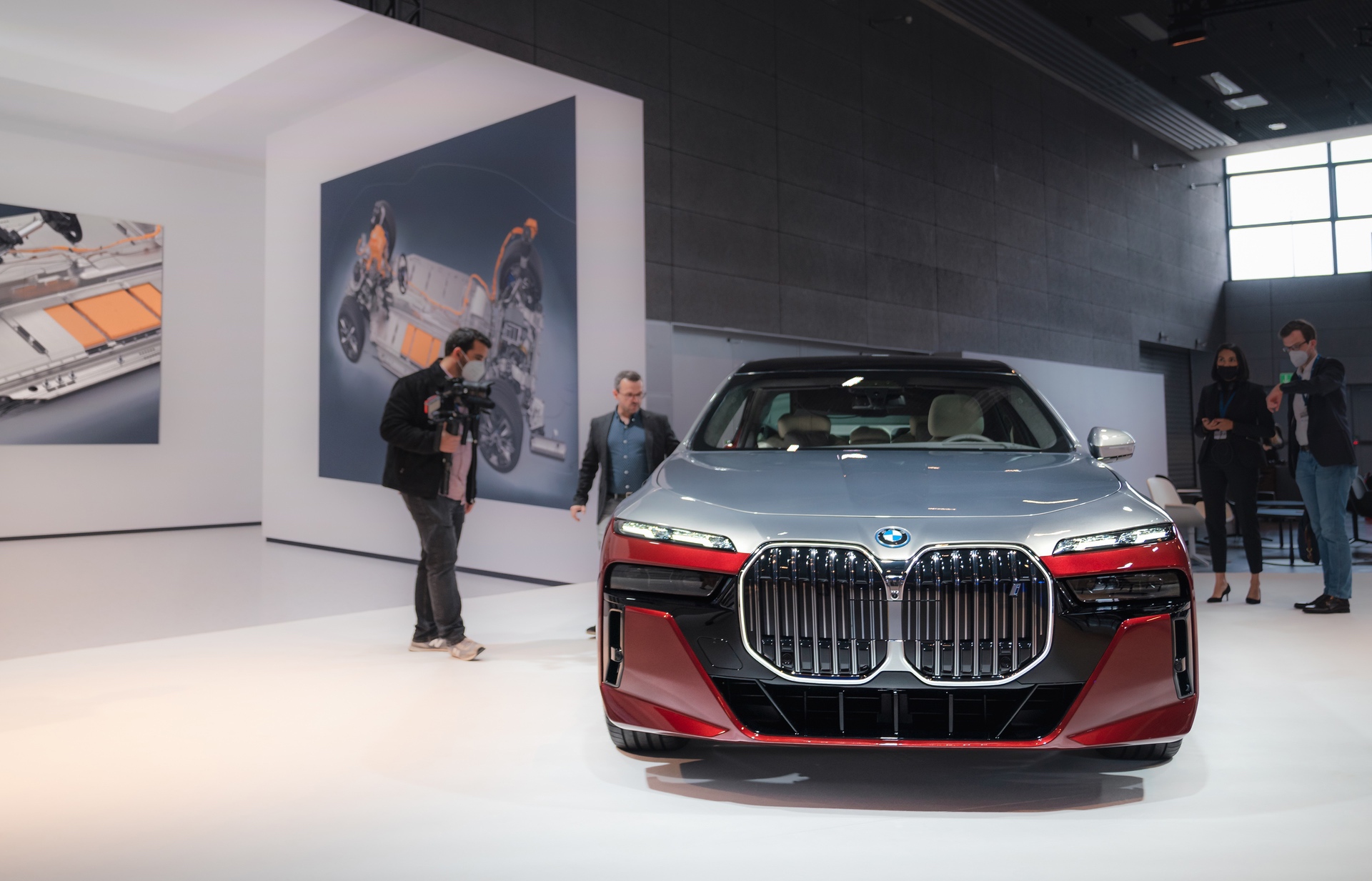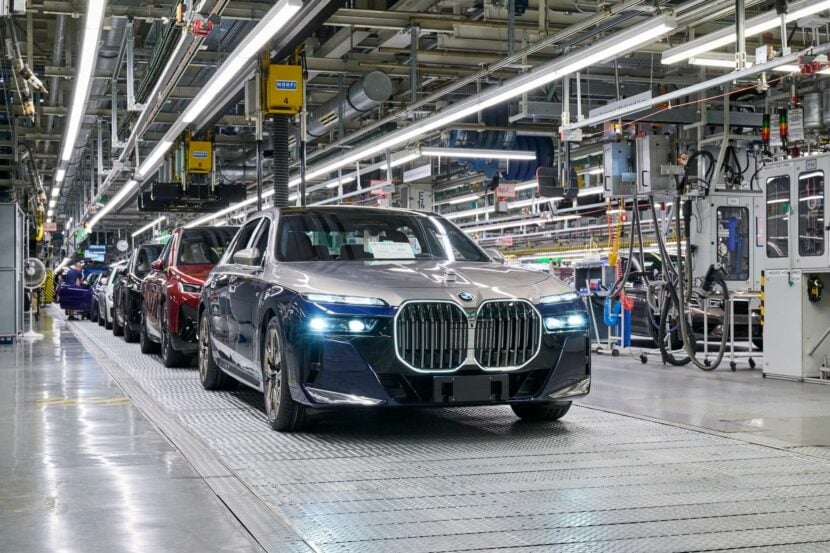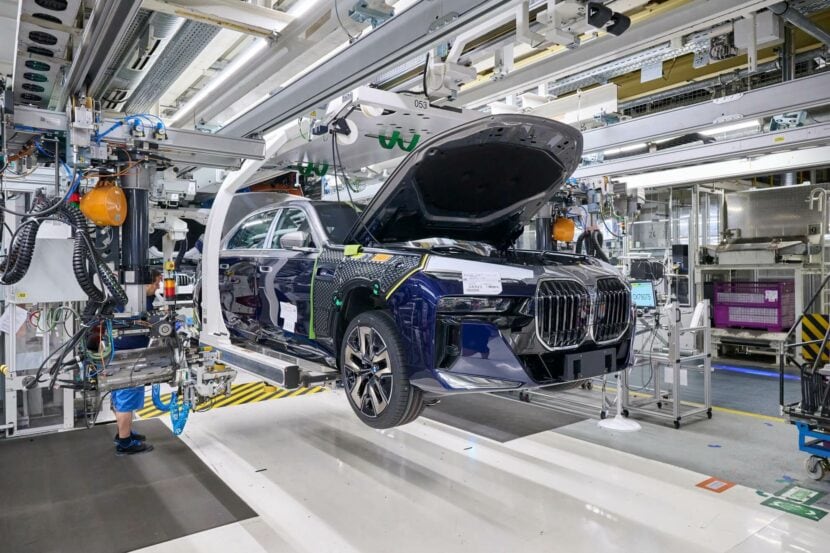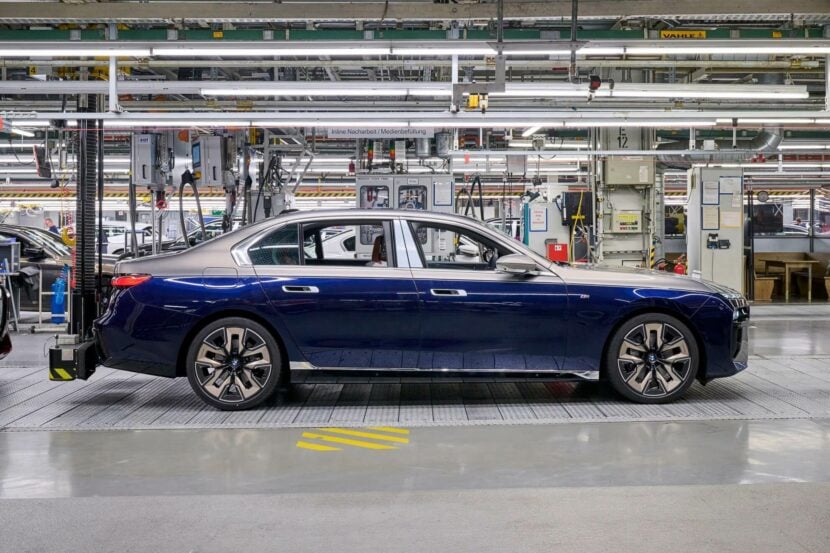The new 2023 BMW 7 Series is the brand’s most advanced model when it comes to technology. Not only does the 7 Series have automatic doors akin to a Rolls-Royce, but also a unique two-tone paint similar to a model from Goodwood. Bear in mind the G70 is not the first BMW in recent times to get a two-tone finish. Last year, China received a Cashmere Silver metallic/Aventurine Red special edition for China based on the M760i limited to 25 cars. Yet, this is the first time BMW has opened the ordering book for any customer who wants a two-tone paint.
Built and Painted in Dingolfing

The new 7 Series is built at Plant Dingolfing where BMW invested over €300 million to ready the plant for production of the new luxury limousine. Part of that investment went to the printshop where BMW established a special process for the two-tone paintwork. To learn more about the new paint technique, we sat down with Bernd Gress, Head of Painted Body Technology Dingolfing Plant. The 51-year-old is responsible for the press plant, body shop and paint shop production areas.
Gress, a mechanical engineer, has been with the BMW Group for 25 years and has already held various managerial positions in the production network, including at the Munich and Hams Hall locations and in China. He has worked in areas such as quality and assembly and was most recently responsible for production concepts for the BMW luxury class and Rolls-Royce in Munich.
A Special Paint Process
We asked Herr Gress to describe the physical production line changes and updated processes that were needed to integrate the two-paint option. “We have established a special process in the paint shop for two-tone paint application that combines fully automated large-scale standard production processes with our experts’ manual painting skills, Gress says. “This naturally makes the process a lot more time-consuming than one-paint application.”
At one point, it took almost 12 hours to move a vehicle through the complete paint process. So we wondered whether a two-tone paint job adds extra time to the production of one vehicle. “Lead times for a regular standard finish are currently under ten hours; for two-tone paintwork, we allow several hours more,” Gress told us.
Painting a car with dual colors is a unique process so the question is if the second color is added to the primary color after B2 is complete or prior to completion of B2.
“In the case of two-tone paints, the primary color is initially applied in fully automated large-scale standard production processes,” the engineer says. “The vehicles are then “side-tracked” into a custom process in which the body is masked manually and the contrasting color and coach lines on the side of the body are applied by hand (front and rear flaps are painted separately in the contrasting color in an automated process). Once the two-tone custom process has been completed, the whole body is given another clear coat in the standard automated process.”
No Tactile Separation Between Colors
Naturally, the next question is whether there will be a tactile separation between the two paint colors. But Gress confirms that customers won’t feel any separation because the body gets a final clear coat.
Adding a new process in the development of a car comes with large complexities and re-adjusting a production line is costly. So we wanted to find out more about the integration of two-tone paint colors in the existing paint process and/or plant infrastructure.
“It is certainly not easy to dovetail large-scale standard production processes, with their inherent efficiency demands, with the skilled manual work that goes into two-tone paintwork, said Gress. A lot of planning know-how and the passion and tremendous craftsmanship of our employees were needed to realize this in the required BMW quality.”
Gress further says that “one of the biggest challenges was to implement the time-consuming and delicate manual masking process with the necessary repeat accuracy and reproducibility. Another challenge was, and still is – as we saw with the Jeff Koons limited-edition BMW 8 Series – integrating the body sections painted by machine and by hand in Dingolfing with painted mounted parts from our plant in Landshut to create a top-class appearance for the entire vehicle.”
Lastly, we want to find out what process is used to open and close the spray orifices of the EcoPaintjet Pro (thermal or piezo). “The innovation referred to (OFLA) is not used in two-tone painting – this is due to the Metallic Paint used for the two-tone,” Gress told us. “However, regardless of this, pressure is used to open the nozzle.”
12,000 Euros for Two-Tone Paints
BMW offers several two-tone paint combinations, from a beautiful Cashmere Silver Metallic/Aventurine Red Metallic to Tanzanite Blue with black. At 12,000 euros, the two-tone paint is an expensive option for the new BMW 7 Series. So we asked BMW to give an estimation on the projected take rate. “We expect it to generate a lot of interest worldwide, but we don’t have a figure for the exact percentage at this point,” said Gress. “BMW is currently offering this option exclusively for the new BMW 7 Series.”
[Top photo by Amelie Mesecke]










































































